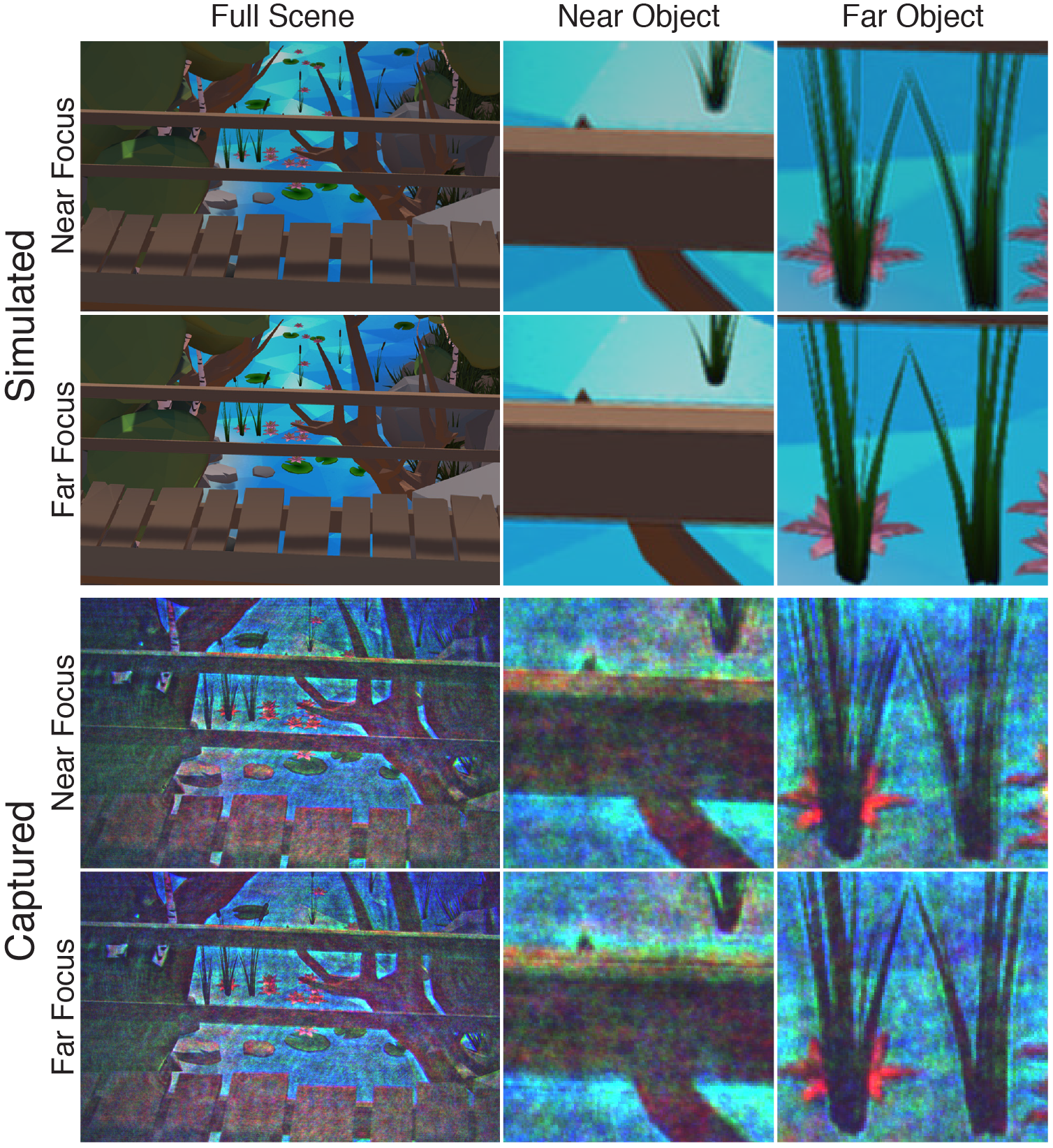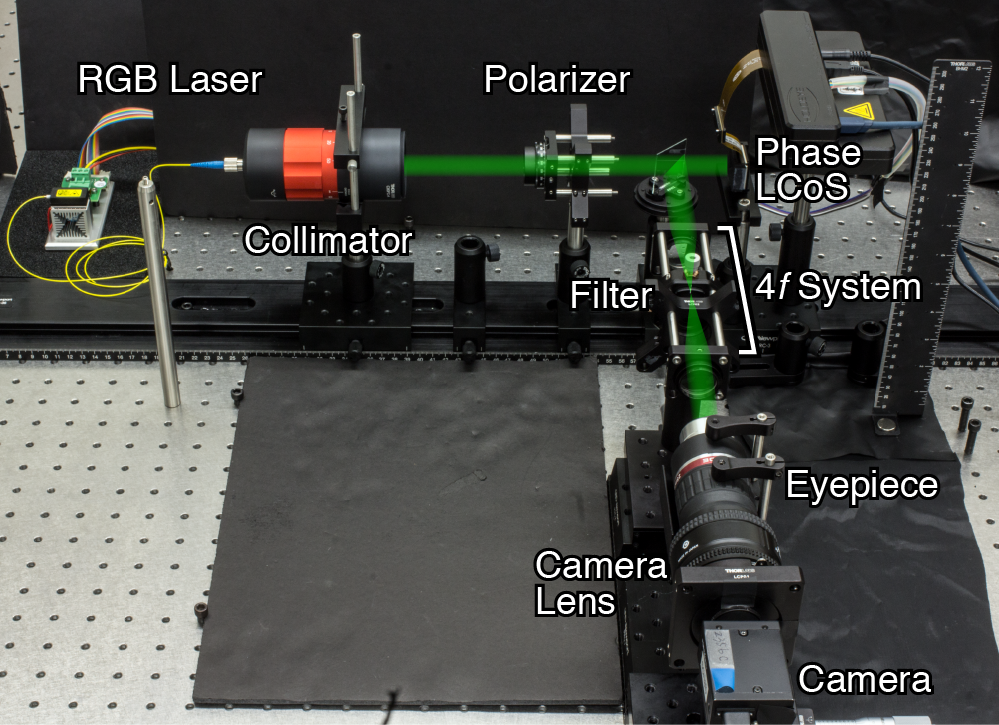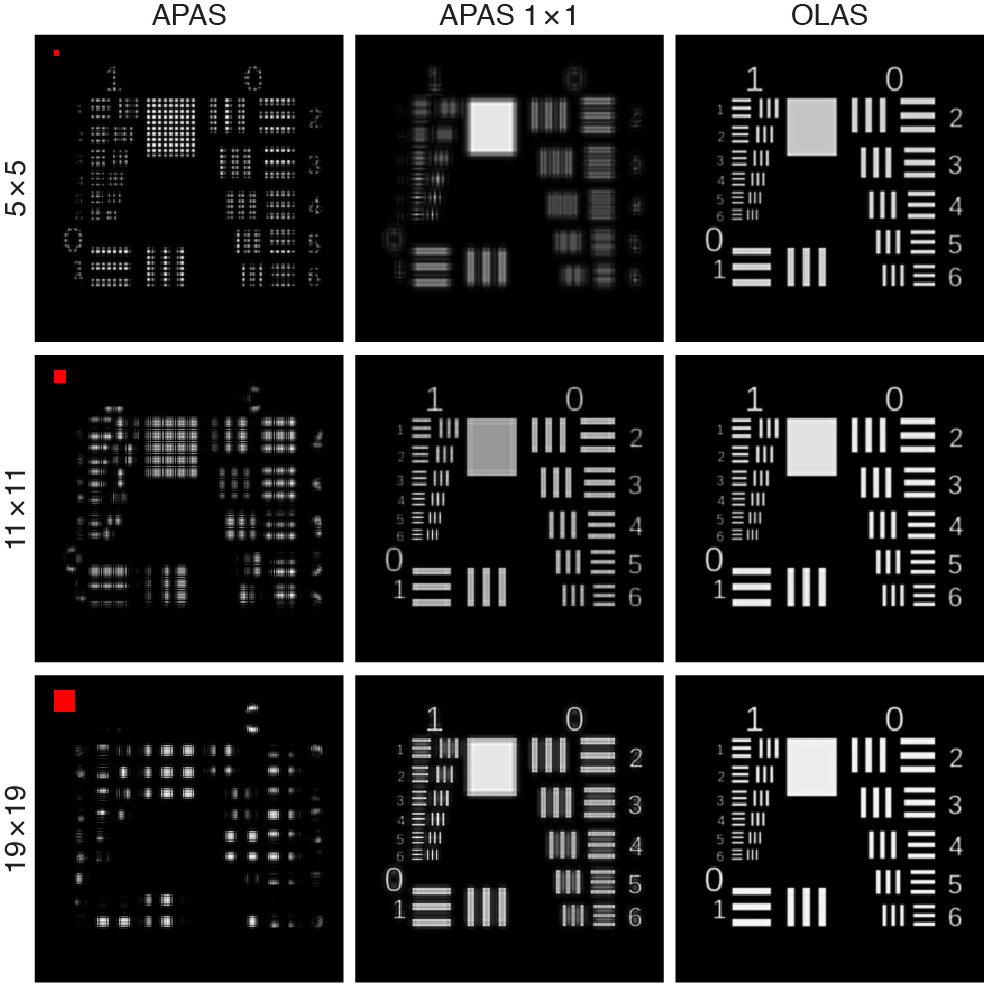ABSTRACT
Holographic near-eye displays are a key enabling technology for virtual and augmented reality (VR/AR) applications. Holographic stereograms (HS) are a method of encoding a light field into a hologram, which enables them to natively support view-dependent lighting effects. However, existing HS algorithms require the choice of a hogel size, forcing a tradeoff between spatial and angular resolution. Based on the fact that the short-time Fourier transform (STFT) connects a hologram to its observable light field, we develop the overlap-add stereogram (OLAS) as the correct method of “inverting” the light field into a hologram via the STFT. The OLAS makes more efficient use of the information contained within the light field than previous HS algorithms, exhibiting better image quality at a range of distances and hogel sizes. Most remarkably, the OLAS does not degrade spatial resolution with increasing hogel size, overcoming the spatio-angular resolution tradeoff that previous HS algorithms face. Importantly, the optimal hogel size of previous methods typically varies with the depth of every object in a scene, making the OLAS not only a hogel size–invariant method, but also nearly scene independent. We demonstrate the performance of the OLAS both in simulation and on a prototype near-eye display system, showing focusing capabilities and view-dependent effects.



